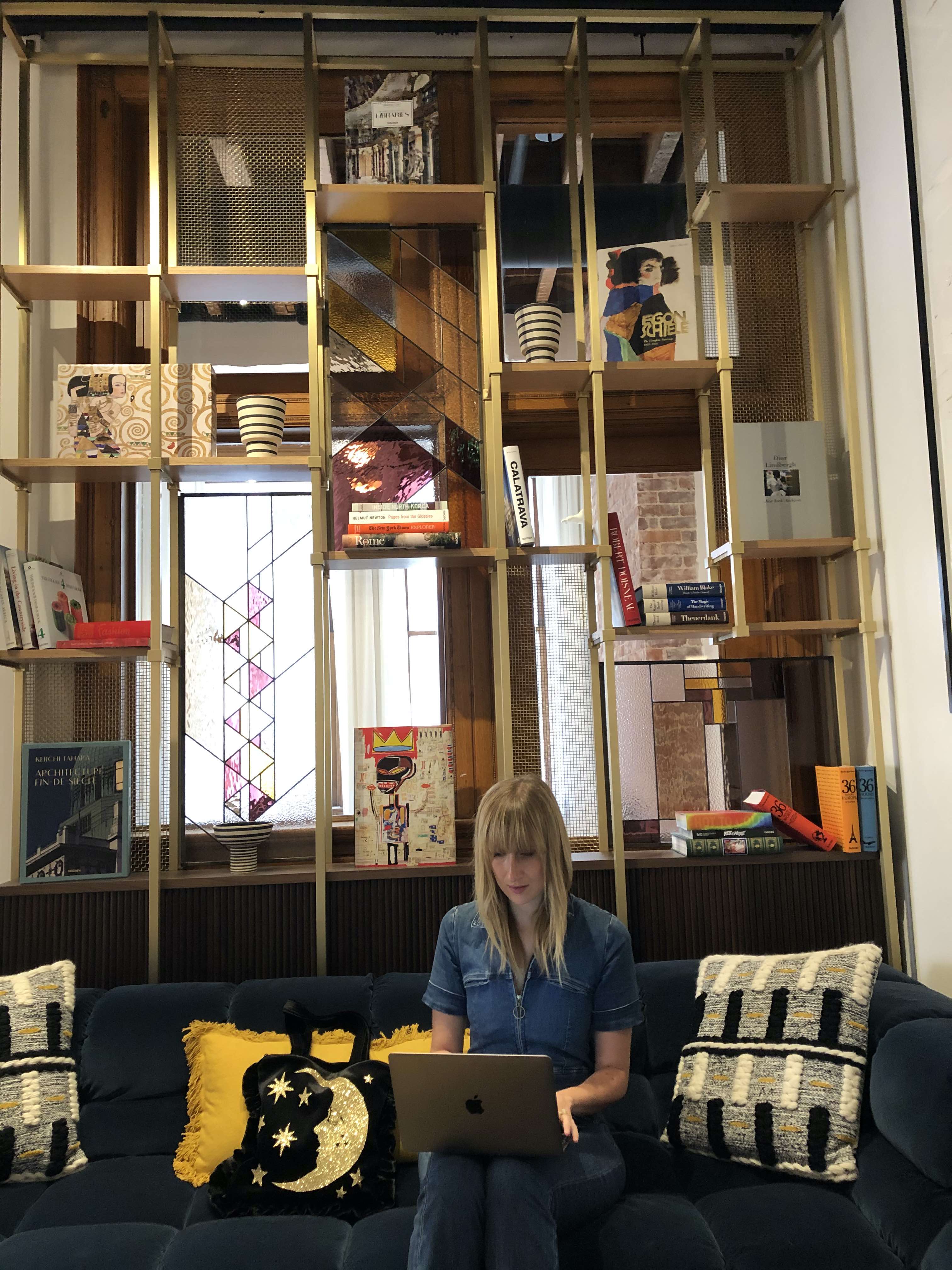
As a teenager, Georgia Powell scoured her local antiques shops for artful bargains. Today, she helps others find their perfect art matches through the London- and Los Angeles-based CURA Art advisory, which she founded with her business partner, Liza Shapiro.
With a background managing the commercial gallery Redfern, and curatorial experience at museums including the Victoria and Albert, Powell has specialized in the professional management, research, and display of collections. Along the way, she has been quietly building her own collection, which includes work by Eileen Agar, sculptor Nan Nan Liu, and Adrian Heath.
We caught up with Powell to talk about starting her art collection with just £50 ($70) in her pocket, the artists on her radar this year, and her deep desire to whisk away a delicate Whistler painting of Venice.
C.R. Wylie, Nocturne. Courtesy Georgia Powell.
What was your first purchase (and how much did you pay for it)?
I started collecting as a teenager, visiting antiques shops in Sussex where I grew up. My first purchase was an early 20th-century painting of a soldier, bought from a shop in Arundel, and it cost me £50. It had a small hole in the canvas, and in my naivety, I decided I would learn restoration by fixing it—my fascination with caring for works of art started young!
What was your most recent purchase?
A delicate gouache of a silhouetted arch against the moon by C.R. Wylie, painted in the early 20th century. As we advise collectors that research is key when acquiring and owning works of art, I like to practice what I preach, and have learned a lot about this little-known artist since purchasing the work.
Which works or artists are you hoping to add to your collection this year?
There are too many contemporary artists whose works I love, but I always seem to be drawn to figurative works, especially the recent work of Amy Beager, and I love everything France-Lise McGurn does. A friend of mine in Sydney, artist Clara Adolphs, captures the human figure in such a wonderfully expressive and emotive way. Michaela Yearwood-Dan is another favorite of mine. I also have my eye on the work of a very recent graduate of the Royal College of Art, Yi To, whose mixing of abstract and figurative is absolutely beautiful.
Courtesy Georgia Powell.
What is the most expensive work of art you own?
Rather than expensive, I think of the works as valuable in terms of my personal connection to them, and the memories they represent. I was very lucky to acquire a few works while managing Redfern Gallery, including a print by Miró and a selection of works on paper by Adrian Heath. When I left the gallery, they gave me a work I had greatly admired while working there: a moonlit Welsh landscape by Danny Markey, which was very touching. I’m also very lucky to have a work by a Surrealist favorite of mine, Eileen Agar, and another treasure is a silver bangle by metalsmith and sculptor Nan Nan Liu.
Where do you buy art most frequently?
I love buying work from artists’ studios, and have a wonderful piece by a painter in Hammersmith from an open studio there in 2017. The painting is of the rooftops in Venice, and the church of San Giorgio, by Isobel Johnstone; it’s a skyline I’m drawn to, having studied in the city as part of my BA. I also think building long-term and trusted relationships with galleries, dealers, and specialists is key when owning a collection.
Danny Markey, Moon (2012). Courtesy Georgia Powell.
What work do you have hanging above your sofa? What about in your bathroom?
The soldier from Arundel previously mentioned proudly sits above my sofa, as well as a small 17th-century copy of a roundel by Raphael from the library in the Vatican, given to me for my 21st birthday by my father. As for my bathroom, part of the advice we give to collectors is where to display works, with long-term preservation in mind, and the moisture and humidity in bathrooms means that I would only really display ceramics in there.
What is the most impractical work of art you own?
I have a few murals painted on the walls, which I won’t be able to take with me if I ever leave!
What work do you wish you had bought when you had the chance?
I would have to say Blue Woman by Jess Valice, which I saw in the artist’s studio in L.A. in early 2020. It’s gone to a wonderful collector who we know well, but it definitely spoke to me!
If you could steal one work of art without getting caught, what would it be?
For me that’s an easy choice—it’s the painting I chose to write about for my thesis: Whistler’s Nocturne: Blue and Gold, St. Marks, Venice, painted in 1880 during one of his extensive trips to the city. Having studied in Venice myself, I definitely have a particular affection for it, and Whistler’s painting seems to capture, so perfectly, the ethereal and mysterious nature of this ancient city slowly disappearing into the water.